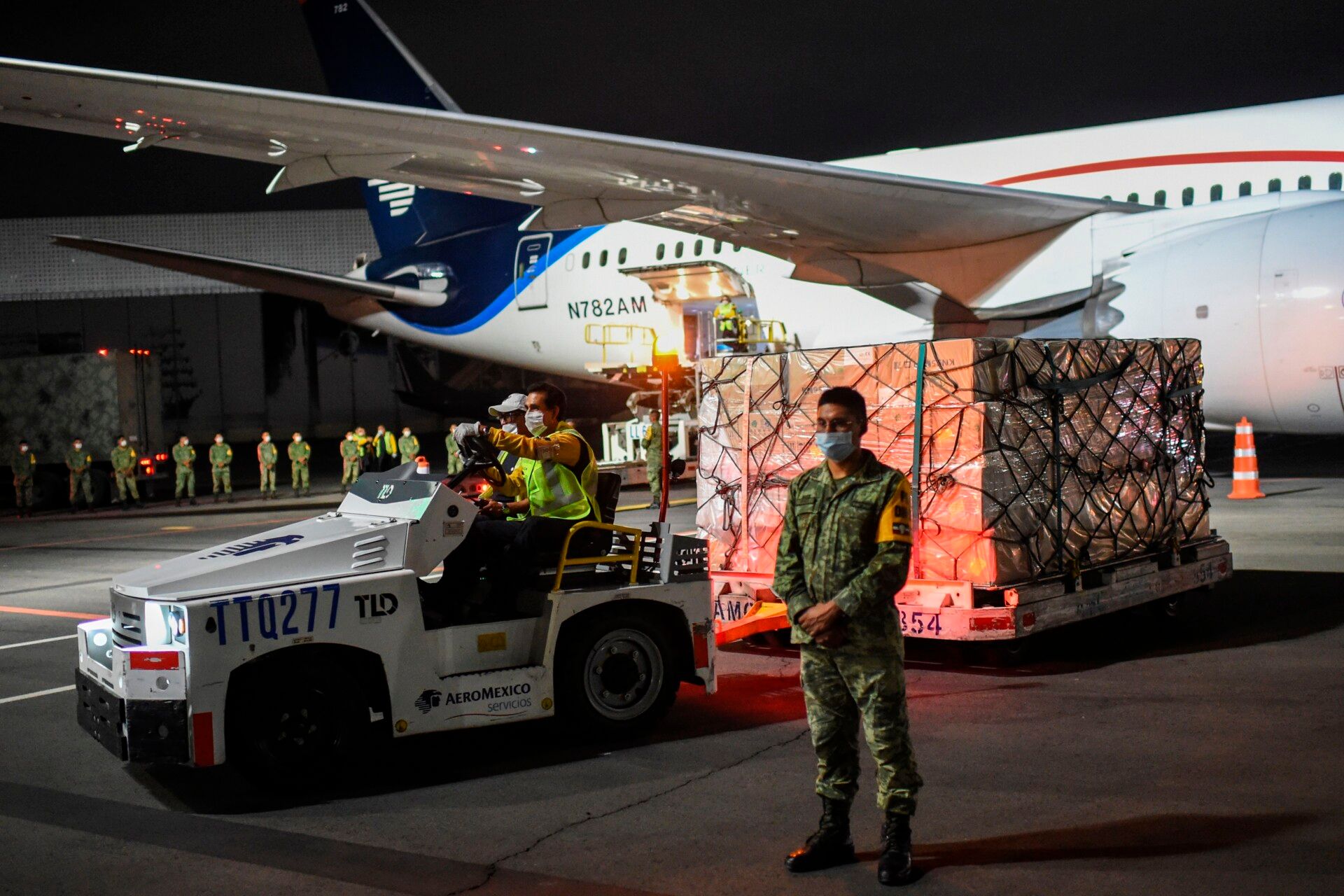Mexico City International Airport
- IATA/ICAO Code
- MEX/MMMX
- Country
- Mexico
- CEO
- Gerardo Ferrando
- Passenger Count
- 36,056,614 (2021)
- Runways
- 05R/23L – 3,900m (12,795ft) |
05L/23R – 3,952m (12,877ft) - Terminals
- Terminal 1 |
Terminal 2
The International Federation of Air Line Pilots’ Associations (IFALPA) released a safety bulletin remarking its concerns around several incidents involving aircraft arriving at Mexico City Benito Juárez International (MEX) with low fuel states due to unplanned holding, diversions, and Ground Proximity Warning System (GPWS) alerts, signaling that one flight “almost had a Controlled Flight into Terrain.” IFALPA did not disclose which airline was involved in this incident. Let’s investigate further.
ATC’s lack of training
The opening of Mexico City’s new Felipe Ángeles International Airport (NLU) led to a reconfiguration of the airspace around the city. While the construction of the new airport was still ongoing, the Mexican provider of air traffic control management (known as Seneam, which stands for Servicios a la Navegación en el Espacio Aéreo Mexicano) redesigned the airspace and trained the controllers to address the new flight paths and overall configuration.
Nevertheless, “it would appear that with the opening of this newly converted airport, ATC has apparently received little training and support as to how to operate this new configuration in the airspace,” said IFALPA on May 4.
Mexico City International Airport has over 7,100 departures and landings every week, including nearly 1,200 from the United States.
The problems
According to IFALPA, aircraft have been arriving at MEX with low fuel states due to unplanned holding. Besides the new airspace configuration above Mexico City, the airport is congested, which is also putting pressure on the Air Traffic Control management.
Some flights have been diverted due to low fuel levels and excessive delays. Additionally, there have been significant GPWS alerts.
“Crews have received clearance that does not adhere to terrain avoidance restrictions on the STAR. Additionally, proper ICAO phraseology is not being used, adding to confusion on altitude restrictions,” said IFALPA.
According to the air traffic controllers union (or Sinacta), the number of incidents above Mexico City has skyrocketed, increasing by 300%, since Seneam implemented the airspace redesign.
The Mexican civil aviation authority is currently downgraded to Category 2 status by the Federal Aviation Administration (FAA). Last year, the FAA announced that the Mexican authorities do not meet International Civil Aviation Organization (ICAO) safety standards.
What to do?
IFALPA has recommended crews consider carrying additional fuel when traveling to Mexico City. This would allow sustaining any prolonged holding and possible diversions.
Additionally, IFALPA is asking crews to consider that MEX is a high-altitude airport that presents additional challenges, so they have to be prepared to operate in that environment. Crews should also exercise heightened terrain situational awareness and strictly adhere to published altitude restrictions.
Discover more aviation news here.
Following the release of IFALPA’s safety bulletin, the Mexican pilot association (ASPA) released a statement saying it has requested a meeting with Seneam and Mexico’s civil aviation authorities.
ASPA wants to verify and tackle, together with the authorities, any problem that may be happening in Mexico City’s largest airport.
“Finally, we urgently call Seneam to listen to the reports issued by Mexican and foreign pilots, looking above all, the safety of air operations and efficiency of our airspace.”
What do you think about this topic? Let us know in the comments below.
Read Next
About The Author





